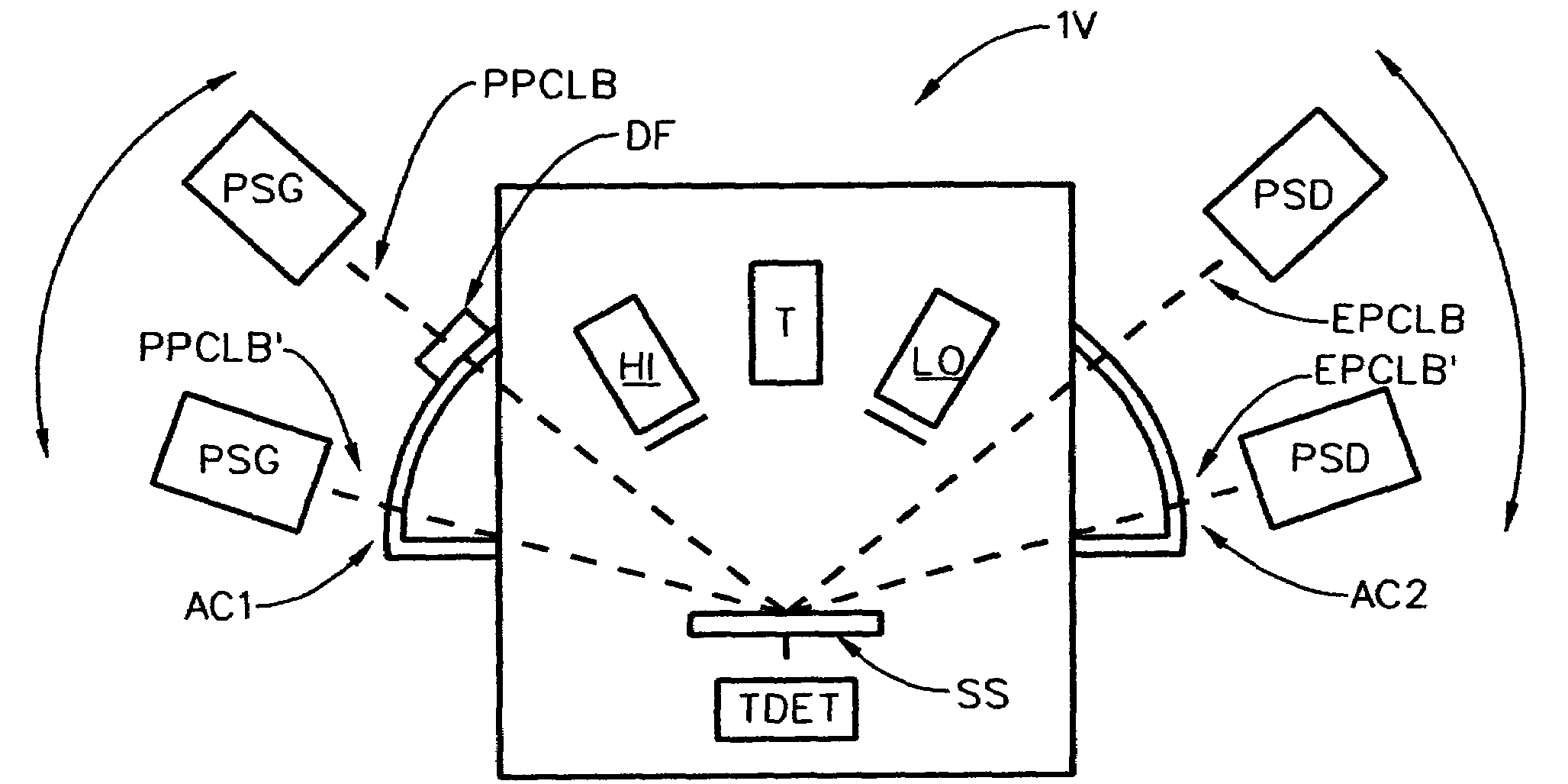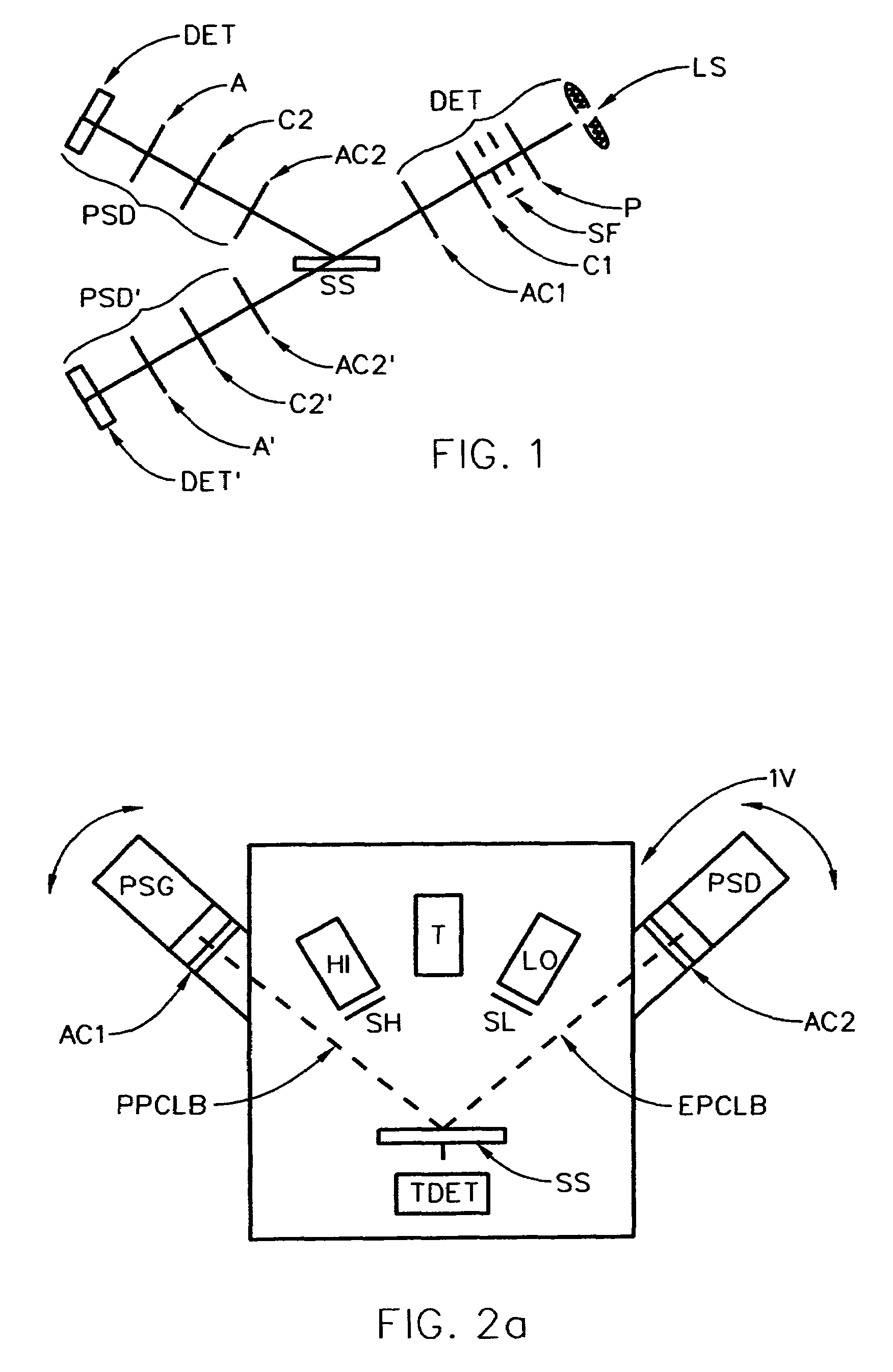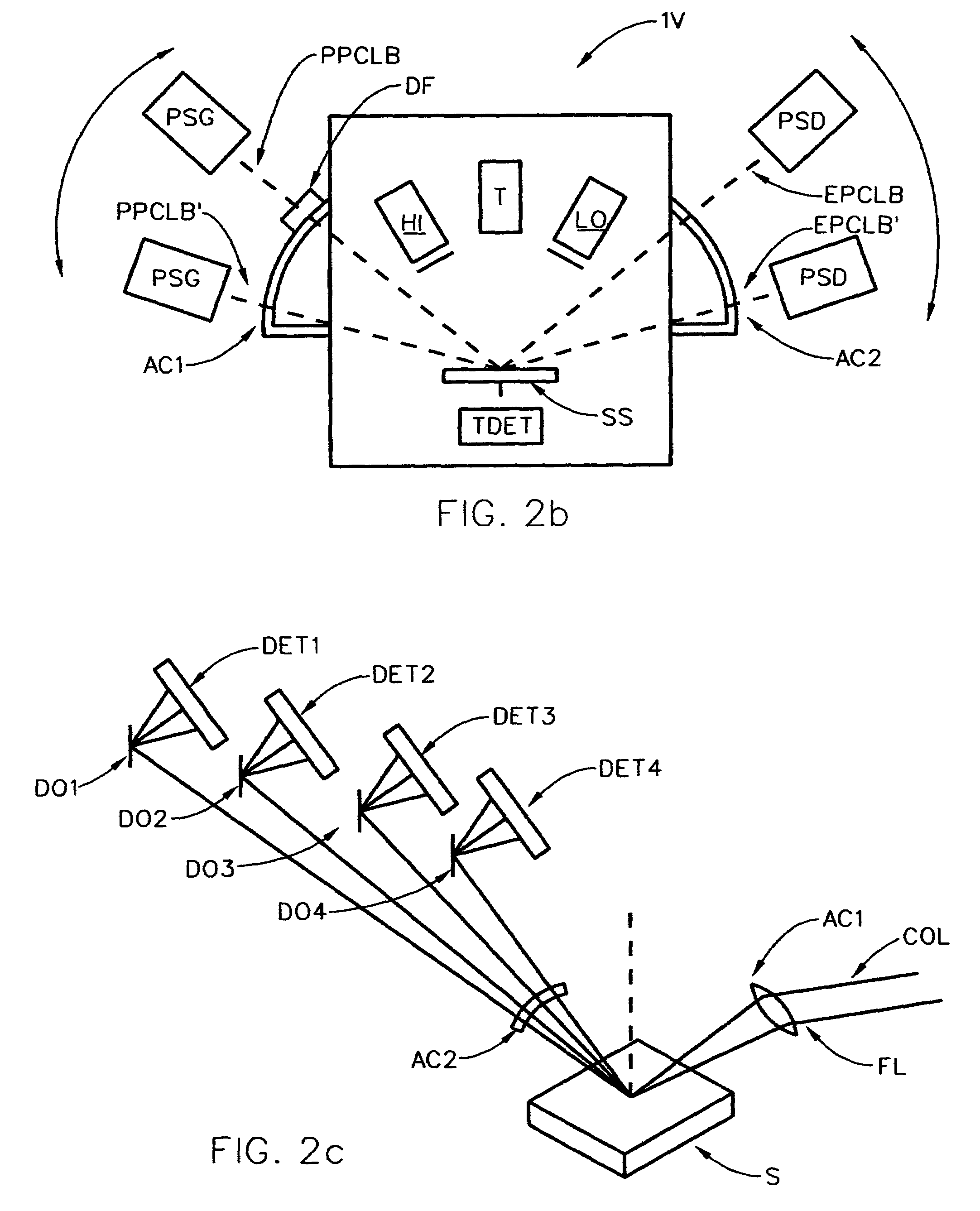Use of ellipsometry and surface plasmon resonance in monitoring thin film deposition or removal from a substrate surface
a technology of surface plasmon resonance and surface plasmon resonance, which is applied in the direction of optical radiation measurement, instruments, measurement devices, etc., can solve the problems of not always optimal and the delta cannot be determined
- Summary
- Abstract
- Description
- Claims
- Application Information
AI Technical Summary
Benefits of technology
Problems solved by technology
Method used
Image
Examples
Embodiment Construction
[0095]To begin, for general insight it should be appreciated that FIG. 1 demonstrates an ellipsometer system which can be applied to investigate a substrate sytsem (SS). Shown for both Reflection and Transmission are, sequentially:[0096]a. a Source of a beam electromagnetic radiation (LS);[0097]b. a Polarizer element (P);[0098]c. optionally a compensator element (C1);[0099]d. (additional element(s)) (AC1);[0100]e. a substrate system (SS);[0101]f. (additional element(s)) (AC2);[0102]g. optionally a compensator element (C2);[0103]h. an Analyzer element (A); and[0104]i. a Detector System (DET).
[0105]It is noted that the elements identified as (LS), (P) and (C1) can be considered to form, as a group, a Polarization State Generator (PSG), and the components (C2), (A) and (DET) can be considered, as a group, to form a Polarization State Detector (PSD). It is to be understood that the d. and f. “additional elements”, (AC1) and (AC2), can be considered as being, for the purposes of the disc...
PUM
 Login to View More
Login to View More Abstract
Description
Claims
Application Information
 Login to View More
Login to View More - R&D
- Intellectual Property
- Life Sciences
- Materials
- Tech Scout
- Unparalleled Data Quality
- Higher Quality Content
- 60% Fewer Hallucinations
Browse by: Latest US Patents, China's latest patents, Technical Efficacy Thesaurus, Application Domain, Technology Topic, Popular Technical Reports.
© 2025 PatSnap. All rights reserved.Legal|Privacy policy|Modern Slavery Act Transparency Statement|Sitemap|About US| Contact US: help@patsnap.com



